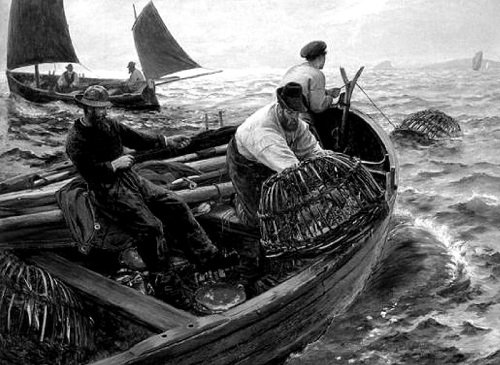
In the Black Sea, there are five species of mullets, but only three of them are of commercial value: the forehead, the sinhill and the wilderness. Their reproduction occurs in the open sea, and the eggs develop in the most superficial layers of water.
Usually in early spring the mullet mules come to the shores, gather in flocks in the shallows and try to penetrate into the estuaries, if they are connected to the sea by at least a small channel. Finding the estuaries of the fry helps instinct: the mullets move towards warmer water, and the limans or closed lagoons warm up faster than the sea.
Enter the estuary of the mullet in small groups and immediately dissipate in shallow waters, choosing the most warm and rich in food places. In the estuary, the fish again gather in kosyachki, in which you can count up to two hundred fish, or even more. It is interesting that in the jamb can be mullets of different species, but all the fish are about the same size, almost every flock is mixed, together the fry of the loban and the sinhilya are looking for food, they are going away from danger together.
It's no coincidence that the mullets come together: when the fish are in a group, the predator is more difficult to focus on the victim, he sees only the flickering of silvery bodies escaping from pursuit.
Each other the mullet fry are found by the smell, they are so accustomed to live in a pack that they do not endure loneliness at all. Scientists have done such an experiment many times. In an aquarium with sea water, put one small mullet, she swam uneasily, refused to feed. But it was worth pour in the aquarium a little water, which was a flock of mullet, as the fish calmed down and went in search of food. Experience complicated. Two aquariums were connected with each other, in one of them there was "schooling" water, in the other - usual sea. Mullet could move freely from one aquarium to another. It was only to let the fish in an aquarium with clean sea water, she immediately went to where she heard the smell of relatives. When she was allowed into the aquarium with "gregarious" water, she stayed there for a long time and seldom left it. This desire to be in a group of relatives was called a group effect by the scientists. It is inherent in all schooling fishes.
First time in the estuary fry eat small zooplankton, which in summer is abundant. So, in the Budak Liman, there are up to 70 species of planktonic animals. Growing up, the fry move on to their basic diet. Adult fish readily eat algae, which by the summer are overgrown with all the pitfalls. But most of the time the mullets are held at the bottom, where they absorb the upper layer of bottom sediments. The mullet mouth is ideally suited for suction of a film covering silt. Usually in this film there is a mass of unicellular algae, and the thicker this film is in the estuary, the faster the mullet gaining weight.
By the end of September, the Singhil fry, which had an initial weight of about one gram, turned into a fish weighing about 100 grams. Loban, which is more large in size, may even weigh 300-400 grams by the end of summer. In autumn, the water in the estuaries cools faster than in the sea, and masses of mullet try to escape to the sea. It is a heat-loving fish, and it does not tolerate winter in the estuaries, where water can be cooled even to negative temperatures. Fry easier to tolerate hypothermia than adults. The fact is that the delicate fat of mullet, which gives it a unique taste, freezes at low temperatures, and the fatter the mullet, the more difficult it becomes for it to move about. A singil, for example, can gain up to 13 percent of fat by autumn, which is why the mullet is so eager to go to sea, where it is possible to find places with a suitable temperature for wintering.
This principle is based on the centuries-old hunting for mullets in the Odessa estuaries: in the spring they created all conditions for a mass approach of the fry to the estuaries, and in autumn they caught the fish that was leaving in the sea. According to the scientist B. S. Ilyin, the cedar farms in our region existed two thousand years ago.
But for several years now the number of fry that are approaching the Odessa coast is not enough to maintain a kefal economy.
Once, many estuaries were famous for the mullet fishery. According to the testimony of the well-known geographer and ichthyologist LS Berg, only in Shabolata (Budak Liman) in 1908 about one million pieces of this valuable fish were caught. The basis of the fishery has always been the Singhil.
 Glyanec
Glyanec